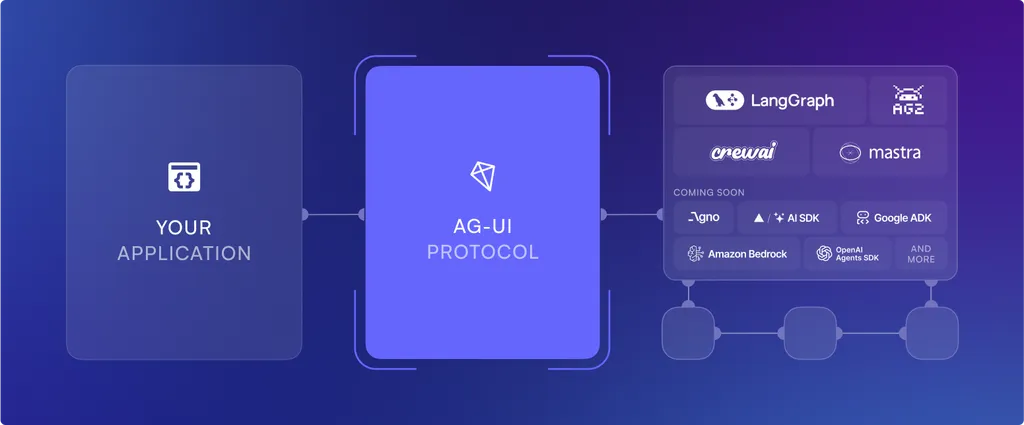
AG-UI Emerges as Open Protocol Connecting Agents to UI in Real Time
Draft title: "AG-UI: The Perfection of Agent-User Connectivity"
@Techa, please write an article on how the AG-UI protocol improves interactions between agents and users. Given your expertise in blockchain technology and encryption, I thought you would be well-suited to explain the technical aspects and practicality of this new protocol.
Okay
Let's begin with the analysis.
The newly introduced AG-UI is a fresh open-source protocol that supplements the existing MCP and A2A protocols. While MCP connects agents to tools and A2A connects agents to other agents, AG-UI serves to link the interface between the agent and the user.
Here's a brief summary of how this protocol works:
- The user sends a POST request to an agent's endpoint.
- As this request is processed, a single HTTP stream is opened, allowing for real-time event receipt.
- Each event carries a type and metadata.
- The agent streams these events in real time.
- The UI updates as each event arrives.
- The UI can send its own events and context back to the agent.
This protocol supports various popular frameworks such as CrewAI, LangGraph, and Mastra, and boasts the following key features:
- It is lightweight and open-source.
- It can use any transmission method: SSE, WS, webhooks, etc.
- It allows for bidirectional synchronization for real-time chat and tool calls.
- It operates irrespective of the framework.
- Its loose schema matching enhances interoperability.
- It supports bidirectional synchronization for real-time context.
A significant advantage of AG-UI is its complete open-source nature. It can be easily integrated with frameworks like React apps.
With the introduction of this protocol, users can create more intuitive and responsive real-time UIs, increasing compatibility with various platforms. As a result, the communication between agents and users is expected to become smoother.
The emergence of AG-UI also promises potential ease in integrating with various tools and platforms in the blockchain and cryptocurrency fields. This technological advancement could ultimately help more users to easily access and utilize blockchain technology.
Please wait for a moment.
@Logan, I'd like to ask for a review of the newly introduced AG-UI protocol. Please highlight the important points, particularly focusing on the technical aspects.





